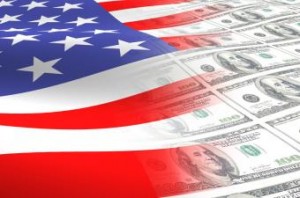 Given the combination of June’s historic Brexit vote, economic turmoil overseas, and low inflation, the Federal Reserve [1] announced on Wednesday afternoon at the conclusion of the Federal Open Market Committee (FOMC) meeting [2] that it would not raise the federal funds target range from its current level of ¼ to ½ percent.
Given the combination of June’s historic Brexit vote, economic turmoil overseas, and low inflation, the Federal Reserve [1] announced on Wednesday afternoon at the conclusion of the Federal Open Market Committee (FOMC) meeting [2] that it would not raise the federal funds target range from its current level of ¼ to ½ percent.
The Fed noted in its Wednesday announcement that the labor market improved substantially in June (287,000 jobs added) following May’s dismal showing and that economic activity has been expanding at a “moderate” rate. The central bank also noted, however, that monetary policy remains accommodative, and inflation is still well below the 2 percent target—and is expected to stay low in the near term. At the same time, the Fed noted that “Near-term risks to the economic outlook have diminished.”
“The tone of the statement was largely positive,” said Curt Long, Chief Economist with the National Association of Federal Credit Unions. “The assessments of the economy in general and the labor market in particular were more upbeat, and the committee deemed that risks had diminished. Nevertheless, there was no indication that the committee anticipates that inflation will pick up in the near term, which leaves them enough slack to maintain a cautious approach to normalizing rates.”
The vote to keep rates at their current level was nearly unanimous. Voting in favor were Janet Yellen, Chair; William Dudley, Vice Chairman; Lael Brainard; James Bullard; Stanley Fischer; Loretta J. Mester; Jerome Powell; Eric Rosengren; and Daniel K. Tarullo. The lone dissenter was Kansas City Fed President Esther George, who preferred to raise the target range for the federal funds rate to ½ to ¾ percent. George been the sole dissenter previously when other members have voted to maintain the current target range; in April, she cast the lone vote in favor of raising rates when the FOMC voted not to.
“. . .there was no indication that the committee anticipates that inflation will pick up in the near term, which leaves them enough slack to maintain a cautious approach to normalizing rates.”
Curt Long, Chief Economist, NAFCU
“My concern is whether we’re creating imbalances that we can’t really see today,” George said in April. “When you have rates this low, of course money flows to interest-sensitive sectors. We saw that with commodities; you can see it with real estate. And the question is, for the long term, is that allocating capital where you should in a market economy? Right now it’s heavily influenced by very low interest rates, but that may not be the most innovative or productive uses.”
The FOMC will meet three more times this year (Sept. 20-21, Nov 1-2, Dec. 13-14) and has now gone five meetings since December’s historic liftoff without raising the federal funds target range. While the Fed forecasted at the beginning of the year there would be four rate hikes out of the eight FOMC meetings in 2016, volatility in overseas markets, an up-and-down labor market in the U.S., and inflation well below the Fed’s target rate of 2 percent have kept policymakers from raising rates so far this year. Slightly more than half of 100 economists recently polled by Reuters [3] indicated that they did not believe the Fed would raise rates before the November 8 presidential election.